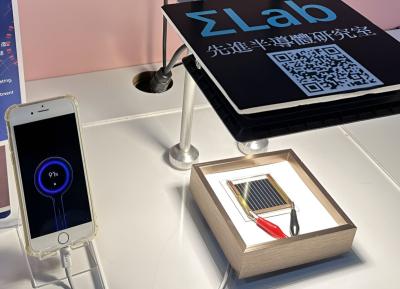Researchers from NREL, Yale University, Hong Kong Baptist University and The Hong Kong University of Science and Technology (HKUST) have designed a chiral-structured interface in perovskite solar cells, which reportedly enhances their reliability and power conversion efficiency.
Using the PSC developed by the team to power a mobile phone as a demo. Image from Techxplore, credit HKUST
The performance of PSCs still faces significant barriers to commercialization, particularly due to various stability issues under real-world conditions. A major challenge is, according to the team, the insufficient adhesion between the different layers of the cells, resulting in limited interfacial reliability. To address this issue, the team was inspired by the mechanical strength of natural chiral materials and constructed an unprecedented chiral-structured interface in PSCs, unlocking very high reliability.
The scientists inserted chiral-structured interlayers based on R-/S-methylbenzyl-ammonium between the perovskite absorber and electron transport layer to create a strong, elastic heterointerface. The encapsulated solar cells retained 92% of their initial power conversion efficiencies after 200 cycles between −40°C and 85°C for 1,200 hours, tested under the International Electrotechnical Commission (IEC) 61215 solar cell standards.
"The intriguing mechanical properties of chiral materials are associated with the helical packing of their subunits, which resembles a mechanical spring," said the first author of this work, Dr. Duan Tianwei, currently a Research Assistant Professor in the CBE Department at HKUST and a previous Research Grants Council postdoctoral fellow. "Incorporating a chiral-structured interlayer at the crucial device interface makes the perovskite solar cell more mechanically durable and adaptable under various operational states," she added.
"It is really the dawn of the commercialization of perovskite solar cells. Given the high efficiencies of these cells, if we could ultimately overcome the reliability issue, billions of energy markets will be seen," said Prof. Zhou Yuanyuan, Associate Professor of the Department of Chemical and Biological Engineering (CBE) at HKUST.




